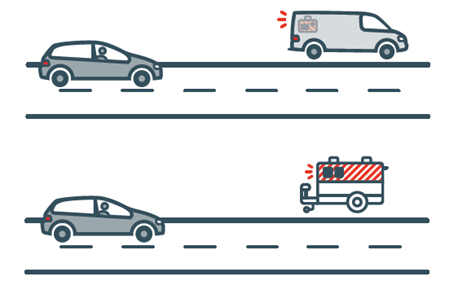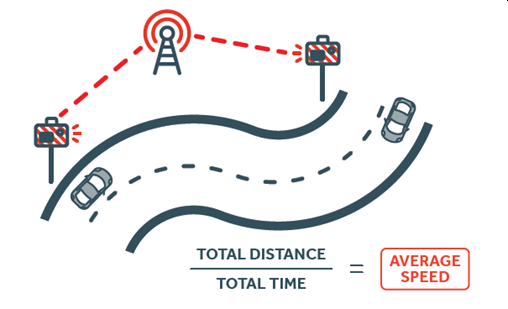Mobile speed cameras operate in Tasmania under a strategy to reduce the number of fatal and serious injuries on our roads.
Speed cameras save lives. Speed cameras reduce the speed of vehicles passing the camera, but they also act as a deterrent and reduce speeding across the whole road network because they can be anywhere, any time. Mobile speed cameras have been proven to reduce speeds and the risk of crashing.
If a vehicle is detected committing an offence, the camera will take a photo and record required information such as speed, date, time, and location. This information is provided to the Department of Police, Fire and Emergency Management (DPFEM) to review prior to a traffic infringement notice being issued.
The Automated Traffic Enforcement Program will implement a new mobile speed camera (Spot-Speed) program and seek to trial and potentially implement other type of automated traffic enforcement technology.
All mobile speed cameras on Tasmanian roads are required to be certified by an independent testing organisation annually. The certification process ensures that each camera’s laser or radar device is measuring speed accurately and is sealed to prevent tampering.
In addition to the certification testing, specially trained mobile speed camera operators are required to run a full inspection of the site, confirming the speed zone and site boundaries, and take several test shots to ensure the system is working accurately before each deployment session.
Before an infringement is sent to the registered operator, a trained DPFEM adjudication officer must review the captured image and offence details and be satisfied with the evidence gathered before issuing an infringement notice. Although Tasmania Police are involved at this stage, the outsourcing of speed camera operations frees up police resources, allowing them to undertake other important work.
The information below provides an overview of some different mobile speed camera technologies.
Mobile speed cameras measure the speed of passing vehicles by sending a radar/light signal to the vehicle, which reflects back to the camera.
The time taken for the signal to return allows the camera to determine the speed of the passing vehicle accurately.

Mobile phone and seatbelt detection cameras take a photo of passing vehicles from an elevated viewpoint, looking into the vehicle, to see if the driver and passengers are wearing a seatbelt correctly and/or using a mobile phone while driving.
Intelligent software analyses the image to determine if a suspected mobile phone or seatbelt offence has occurred. If no offence is indicated, the software program will destroy the image and prevent anyone from viewing or using it. However, if an offence is detected, the image will be provided to the Department of Police, Fire and Emergency Management to verify an offence has occurred before issuing a Traffic Infringement Notice.

Average speed or point-to-point cameras do not currently operate in Tasmania.
The Department of State Growth is seeking to trial and potentially implement point-to-point cameras in the near future.
Point-to-point cameras use two cameras together to measure the time that it takes for a vehicle to travel between two points on the road (potentially many kilometres apart). The time taken to travel between the two points is compared to the minimum time possible without exceeding the speed limit.
If the time taken is less than what is possible without exceeding the speed limit, a speeding offence is deemed to have occurred.

Registration enforcement systems automatically images each passing vehicle on the road. Intelligent software then reads the vehicle number plate in each image and compares it to a list of known vehicles that are not permitted on public roads.
If the number plate matches a plate associated with a vehicle that is not permitted for use on public roads, the image is securely transferred to the Department of Police, Fire and Emergency Management to verify an offence has taken place. During this process every vehicle’s status is re-checked by a trained adjudication officer before an infringement notice is issued.